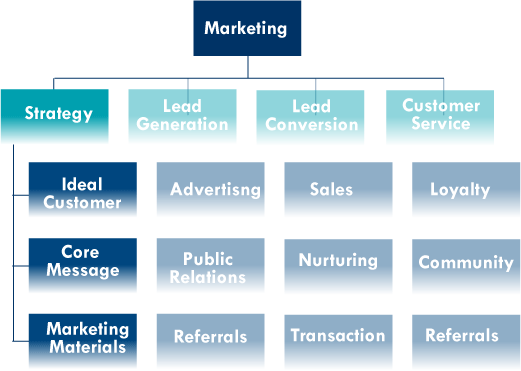Salesmanship 101 Salesmanship - I just love that word. It's the ability to sell. It's 50% art and 50% science. Of course that's
my opinion. Ask most salespeople and they'll say it's 90%
art and 10% science. I know, because that's how I felt years ago. I
believe there is a science to successful selling
and it's not acquired through osmosis. You have to dig for it. You have to ratchet up your
level of interest and curiosity. You have to take courses, you have to read books
and magazines, and you have to listen to CDs. Throughout my sales career I've made lots of mistakes. But I've always had my learning meter set to the
highest levels. I'm just determined to get better and I hope you
are too. I have a sales tip for you that will enhance your
salesmanship and improve your selling results. Basically, the sales tip is just a reminder to
stop talking and start asking more questions. What's the big deal about asking questions, you
might be wondering? For starters you can't learn anything while you're
talking. People who are good listeners always seem to be
more likable, and that's a good thing especially
if you're in sales. The longer you've been in sales, the more careful
you have to be about controlling how much talking
you do - because that's not good salesmanship. In fact the more you know about your products and
services, the more you are inclined to share with your
sales prospects and customers. You see what happens when you don't ask questions
is that it forces you to make unnecessary assumptions. The less you know, the more you assume! When you combine how much you don't know about a
sales prospect with how much you do know, because
of years of experience, about your products and
services the results can be disastrous. With limited knowledge about your sales prospect
you're forced to tell all there is to tell about your
products and services. But there is a better way and I discovered it
just about 21 years ago. Like most people in sales I enjoy talking, but I
enjoy selling more. And I can guarantee you, without
any doubt, you will sell a lot more when
you learn to employ your ears before you engage
your mouth - that's salesmanship! About 20 years ago I stopped showing up and
throwing up on my sales prospects and customers. It was easy to do as long as I began my presentation
with really good questions. Here's an example of what I'm mean. About 20 years ago a sales manager called me and
asked about my availability to do a one day sales
training program. I recall asking him a bunch of questions and
learning a number of things about his sales team. His sales team sold drum chemicals. His sales team consisted of 50 salesmen - no women. His sales team had an average age of 55. The sales manager provided his sales team with one
day of sales training every year. I kept asking questions and finally asked this
question. "How will you measure the success of my one-day
sales training program with your sales team?" He thought for a moment and then reminded me that
his sales team sold drum chemicals, consisted of 50
men, and the 50 men had an average age of 55. He then added, "You know Jim, if in the middle
of the afternoon, no one is sleeping, I'll consider your
sales training to be a very effective." I can't make this stuff up - this actually happened. I had to ask the question to learn how this sales
manager would measure the success of my sales
training program. It made my sales presentation more focused on his
needs. In fact, it allowed me to say, "Based on what you
just told me, I'd like to tell you how I'll keep your
salespeople awake and engaged throughout the
afternoon of the sales training program." And of course I did. And of course I got the sales training assignment. And of course I kept his salespeople (all of them)
awake during the afternoon. That's the story and here's the point. The less
you say the smarter you'll sound. Asking questions will give you more insight and
credibility. Always get your customer talking
first - that's what salesmanship is all about. Doing it this way will make what you say even more
powerful and persuasive because it's based on what
they said first. So Salesmanship 101 begins with lesson # 1 - simply
stated it's to start with your customers not with your
products. Ask good questions! If you like this question, you might also like 11
others I have in my best-selling book titled, "The 12
Best Questions To Ask Customers." Here's the link to learn more: http://www.meisenheimer.com/products/salesquestions.htm
Special Bonus: All eBook orders will receive a link
to get a copy of my Special Report titled, "25 Ways
To Get Motivated To Have A Sensational Year."
Contribute Your Two Cents
lhttp://www.startsellingmore.com/poll-sales-challenges.html
Don't Be Too Busy To Get Smart
Spend less!
Cutbacks are in! Stop investing in yourself! Throw in the towel and lower your prices. Eliminate sales training - it costs too much! Eliminate advertising - it only works during good times! Follow your instincts to join the herd of frustrated
salespeople!
On the other hand . . .
You can join me and a small group of professional
salespeople May 13-14, 2009 in Tampa for my 2-day
Sales Training Program. You don't know, what you don't know. Come on a learning safari with me and discover what
really matters most during these challenging times. Get complete details here: Get details here:
Favorite Quote Success is that old ABC - ability, breaks and courage.
Charles Luckman
Are You Twittering Yet:
http://twitter.com/jimmeisenheimer
| 




 "The most common frustration I see, and I see it daily, comes from marketers who can't figure out why more people won't buy their product," says Seth Godin in a post at his blog. All the rational arguments in the world, it seems, won't dissuade irrational customers from giving their business to a lesser competitor.
"The most common frustration I see, and I see it daily, comes from marketers who can't figure out why more people won't buy their product," says Seth Godin in a post at his blog. All the rational arguments in the world, it seems, won't dissuade irrational customers from giving their business to a lesser competitor.  by Karl Greenberg
by Karl Greenberg  by Aaron Baar
by Aaron Baar  by Karlene Lukovitz
by Karlene Lukovitz 




 by Karl Greenberg
by Karl Greenberg  by Sarah Mahoney
by Sarah Mahoney  by Karl Greenberg
by Karl Greenberg 









 "Evangelism" is the catchword of the day. Companies are diligently turning their customer-service reps into "evangelists." How precious. But is there something behind this movement? Is evangelism actually taking CRM to a new level? Ben McConnell thinks so, and he cites an example at the
"Evangelism" is the catchword of the day. Companies are diligently turning their customer-service reps into "evangelists." How precious. But is there something behind this movement? Is evangelism actually taking CRM to a new level? Ben McConnell thinks so, and he cites an example at the 

 by Karlene Lukovitz
by Karlene Lukovitz  by Aaron Baar
by Aaron Baar  by Karl Greenberg
by Karl Greenberg 










